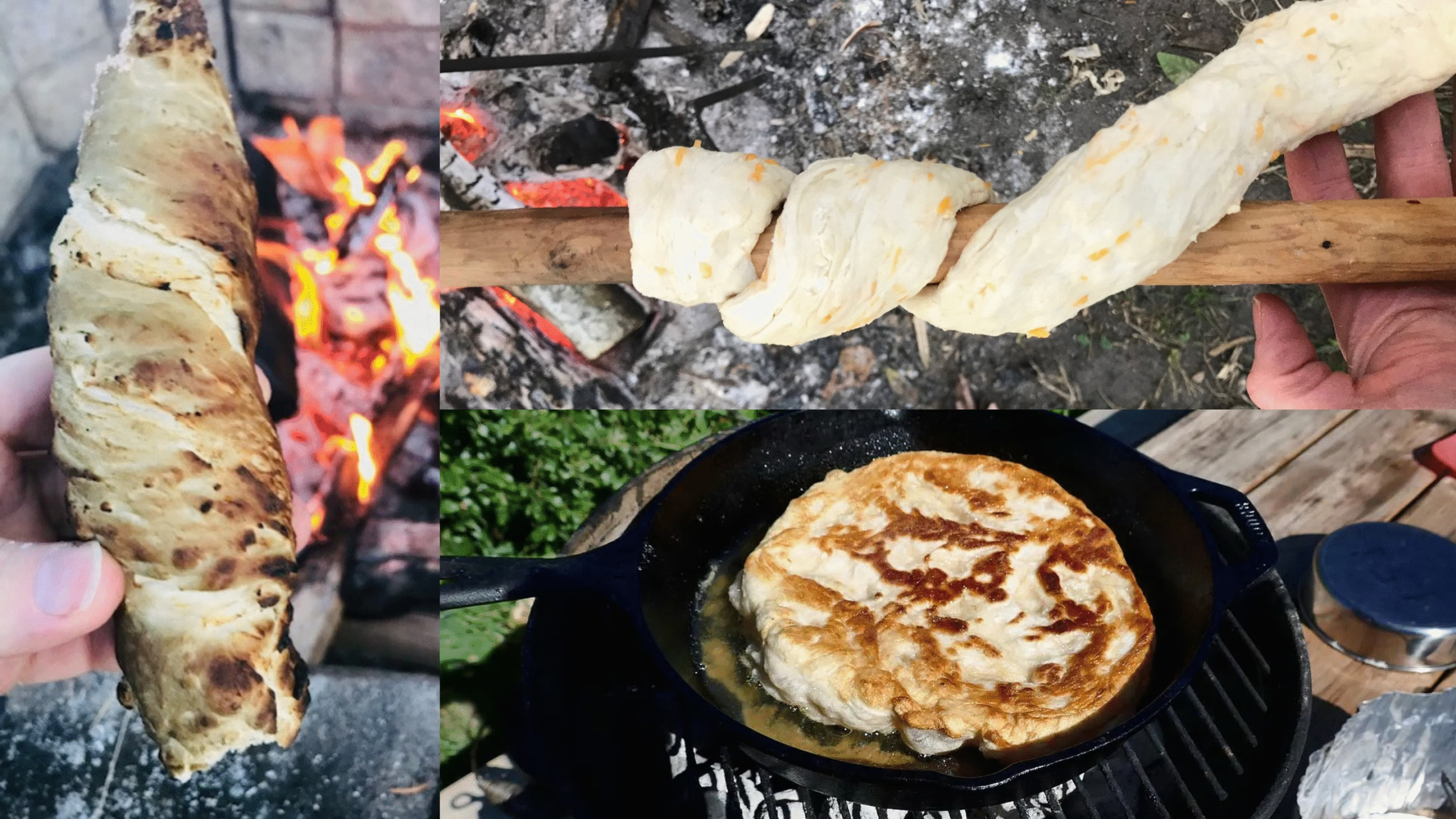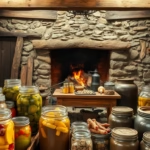What do Scottish fur traders and Native American scouts have in common? They both knew the life-saving secret of bannock bread—a simple yet powerful survival food that could mean the difference between thriving and merely surviving in the wilderness.
Unlike hardtack, which requires no cooking but offers little comfort, Bannock bread provides hot, nourishing sustenance that lifts both body and spirit when you need it most. This isn’t just another camping recipe—it’s a time-tested survival technique that has kept explorers, trappers, and indigenous peoples alive for centuries.
More Than Just Flour and Water: The Enduring Legacy of Bannock
Bannock’s history is as rich and dense as its texture. Originally a heavy, flat bread made of barley or oatmeal and cooked on a griddle (or bannock stone) in Scotland, its recipe traveled across the Atlantic with explorers and fur traders. They valued it for a simple reason: the dry ingredients were lightweight, portable, and non-perishable.
Indigenous peoples of North America quickly adopted and adapted the recipe, creating the delicious fry bread we know today, a staple at cultural gatherings. From the Scottish Highlands to the vast Canadian wilderness, bannock was the fuel that fed exploration and survival. To make it is to connect with a long history of resilience and ingenuity.
Food Preservation Techniques have always been crucial for survival, but bannock offered something different—fresh bread that could be made anywhere, anytime, with minimal ingredients.
Bannock vs. Hardtack: The Critical Differences
While hardtack deserves respect as a long-term storage food, bannock serves a different purpose entirely. Hardtack is designed to last months or even years, but it’s dense, hard, and requires soaking to become palatable. Bannock, on the other hand, is meant to be consumed fresh and hot, providing immediate comfort and energy.
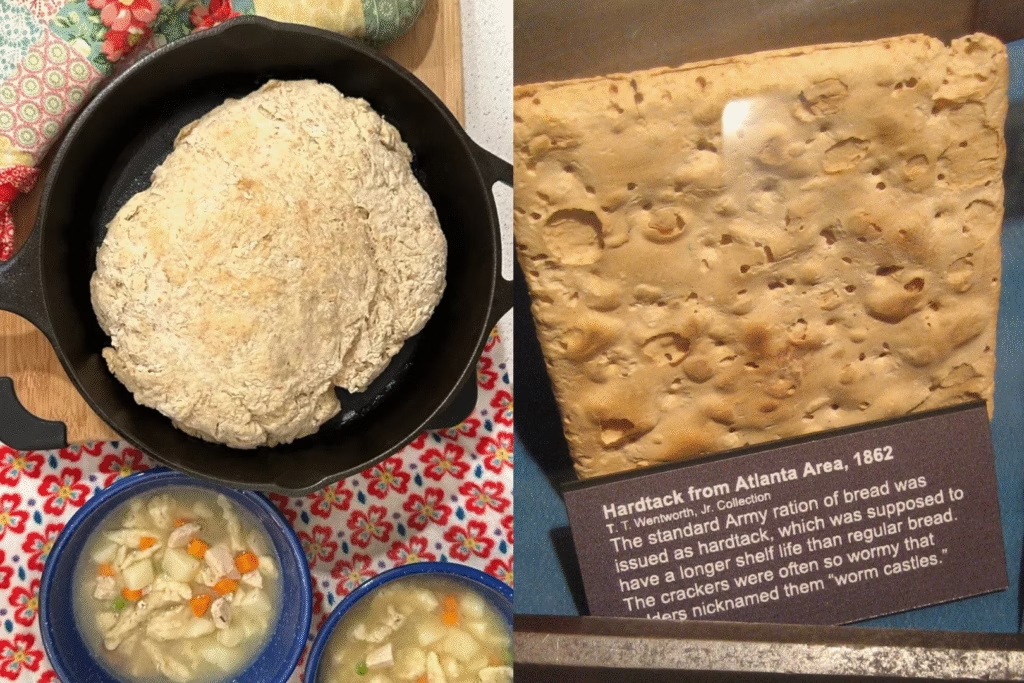
The key advantages of bannock include:
Immediate Satisfaction: Hot, fresh bread that boosts morale and provides psychological comfort during stressful survival situations.
Versatile Cooking Methods: Can be wrapped around sticks, fried in pans, or baked on hot rocks—adapting to whatever cooking method you have available.
Nutritional Density: One cup of bannock mix provides approximately 800 calories, offering substantial energy for demanding physical activities.
Quick Preparation: No kneading, no rising time—just mix and cook while the baking powder is still active.
The Science Behind Bannock’s Effectiveness
The genius of bannock lies in its simplicity and the chemistry of its ingredients. The baking powder creates lift and tenderness without requiring yeast or fermentation time. The small amount of salt not only enhances flavor but also helps strengthen the gluten network in the flour, creating better texture. When fat is added—whether butter, lard, or bacon grease—it increases the caloric density while creating a more satisfying, longer-lasting feeling of fullness.
Mastering the Art of Bannock: Step-by-Step Instructions
Pre-Mixed Survival Bannock (Prepare at Home)
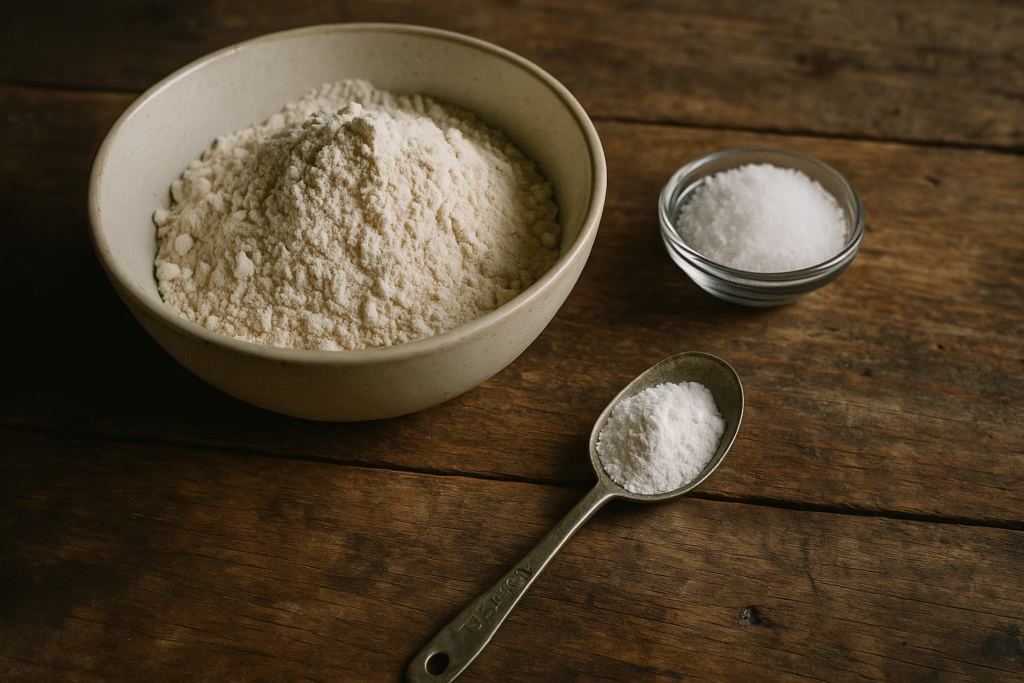
The key to successful wilderness bannock is preparation. Before you head into the wild, create your survival mix:
Ingredients for Base Mix:
- 1 cup all-purpose flour
- 1 teaspoon baking powder
- 1/2 teaspoon salt
Field Preparation:
- Add liquid slowly: Start with 1/4 cup of water and gradually add more until you achieve a soft, slightly sticky dough
- Don’t overwork: Mix just until ingredients are combined—overworking develops too much gluten, making the bread tough
- Test consistency: The dough should hold together but not be dry or crumbly
Enhanced Calorie-Dense Version
For situations requiring maximum energy:
- Add 1-2 tablespoons of fat (butter, lard, or bacon grease)
- Consider adding 1 tablespoon of sugar for quick energy and improved flavor
- Include a handful of nuts or dried fruit if available
This enhanced version can pack over 1,000 calories per cup of mix, making it ideal for high-energy situations or extreme cold weather survival.
Cooking Methods: Adapting to Your Situation
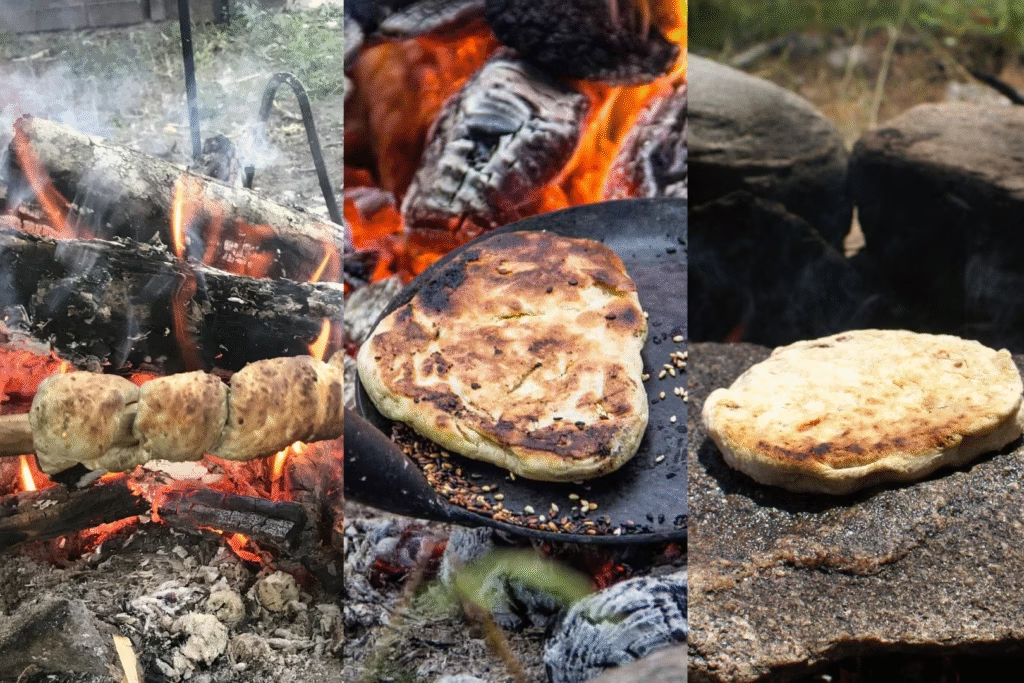
Stick Cooking: The Classic Method
This is perhaps the most iconic way to prepare bannock, and it’s perfect when you have limited cooking equipment:
- Prepare your stick: Use a green hardwood stick about 1-2 inches thick and 3 feet long. Strip the bark and clean thoroughly.
- Shape the dough: Roll dough into a snake-like rope about 1/2 inch thick
- Wrap carefully: Spiral the dough around the stick, leaving small gaps for even cooking
- Cook over coals: Hold over hot coals (not flames) for 10-15 minutes, rotating frequently
Pro tip: The bread is done when it sounds hollow when tapped and pulls away from the stick easily.
Pan Frying: Native American Style
This method, similar to traditional fry bread, works excellently in cast iron or any heavy-bottomed pan:
- Heat your pan: Preheat over medium-low heat with a small amount of oil or fat
- Shape into patties: Form dough into flat rounds about 1/2 inch thick
- Cook low and slow: 3-4 minutes per side until golden brown and cooked through
Rock Baking: The Primitive Method
When you have no cookware, hot rocks become your oven:
- Select proper rocks: Avoid river rocks or limestone (they can explode when heated)
- Heat in fire: Place rocks in your fire for 30-45 minutes
- Clean the surface: Brush away ash and debris
- Test temperature: Water should sizzle when dropped on the rock
- Bake the bread: Place flattened dough on hot rock, cover with another hot rock or metal
Nutritional Enhancements
Smart additions can significantly boost the nutritional value:
Protein Boosters:
- Add 1-2 tablespoons of protein powder to the dry mix
- Include chopped nuts or seeds
- Mix in small pieces of jerky or dried meat
Vitamin and Mineral Additions:
- Dried berries provide vitamin C and antioxidants
- Seeds add essential fatty acids and minerals
- Wild edibles like dandelion greens can be chopped and added fresh
This connects perfectly with natural remedies and using what nature provides for complete nutrition.
Troubleshooting Common Mistakes
Texture Problems
- Too Dense: Usually caused by overworking the dough or insufficient liquid
- Too Crumbly: Not enough liquid or old baking powder
- Burnt Outside, Raw Inside: Cooking temperature too high—use lower heat and longer cooking time
Taste Issues
- Bland Flavor: Increase salt content or add herbs and spices
- Bitter Taste: Old baking powder or flour—replace ingredients
- Soggy Texture: Insufficient cooking time or too much liquid
Learning from Our Ancestors
The wisdom of traditional foods like bannock reminds us that our ancestors possessed practical knowledge that modern technology hasn’t replaced. They understood that survival isn’t just about calories—it’s about maintaining the will to survive, staying connected to the land, and finding comfort in simplicity.
For those interested in diving deeper into this ancestral wisdom, resources like The Lost Superfoods offer comprehensive guides to traditional foods that sustained our ancestors through the most challenging times. This knowledge isn’t just historical curiosity—it’s practical wisdom that could prove invaluable in uncertain times.
Similarly, The Lost Frontier Handbook provides detailed instructions for traditional skills that complement food preparation, offering a complete picture of self-sufficient living.
Conclusion: Your Next Steps to Mastery
Bannock bread represents more than just a survival food—it’s a connection to our ancestors’ wisdom and a practical skill that could prove invaluable in uncertain times. Whether you’re planning a wilderness adventure, building your emergency preparedness supplies, or simply wanting to connect with traditional food ways, mastering bannock should be on your essential skills list.
The beauty of bannock lies in its simplicity and adaptability. With just a few basic ingredients and minimal equipment, you can create satisfying, nutritious bread anywhere. This knowledge transforms you from someone dependent on modern conveniences to someone capable of thriving in challenging conditions.
Start by mixing up a batch of bannock mix today. Practice the different cooking methods in your backyard, over a campfire, or even on your stove. Like any skill, mastery comes through practice, and there’s no substitute for hands-on experience.
Remember, survival isn’t just about having the right gear—it’s about having the right knowledge and the confidence to use it when it matters most. Bannock bread is one of those timeless skills that bridges the gap between historical wisdom and modern preparedness.
What will you try first—the traditional stick method or the convenience of pan frying? Share your experiences and discoveries with fellow preparedness enthusiasts, and continue building the knowledge that has kept humans alive and thriving for generations.

